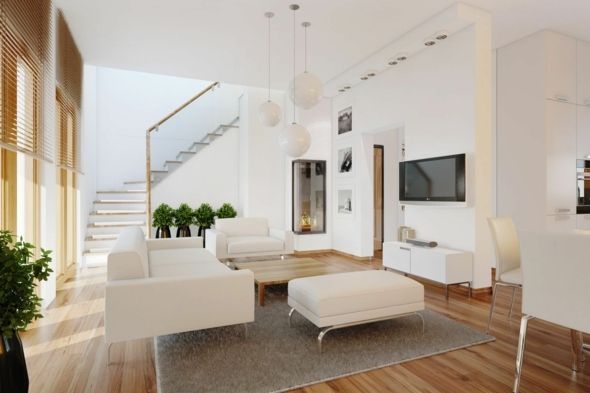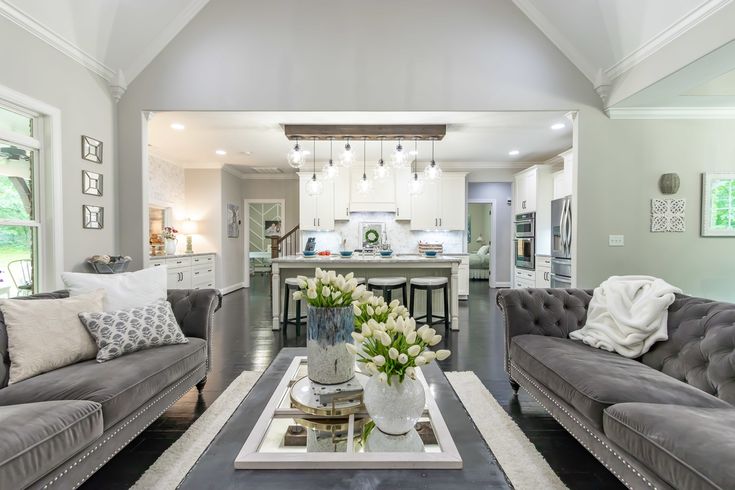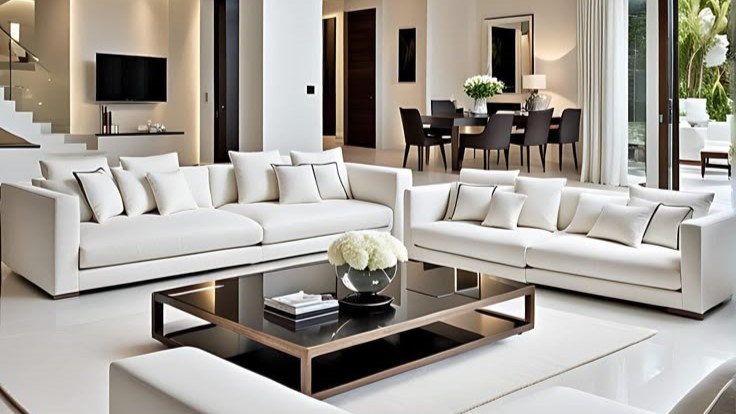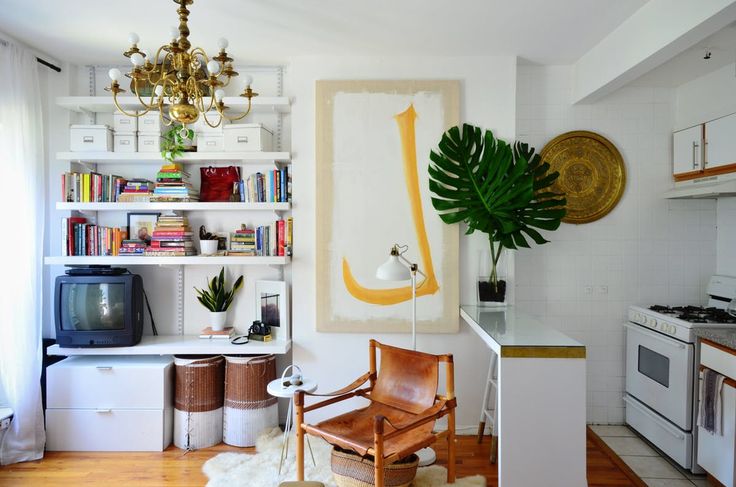Minimalist Magic: Discovering the Best Interior Design Trends for a Serene Home
Minimalist Magic: Discovering the Best Interior Design Trends for a Serene Home – In today’s fast-paced world, our homes have become a sanctuary—a place to retreat, recharge, and reconnect with ourselves. Amid the clutter and noise of everyday life, the art of minimalist interior design has emerged as a popular and powerful solution for creating serene, calming spaces. In this article, we delve deep into the philosophy, trends, and practical steps behind the best minimalist interior design concepts, guiding you on a journey toward transforming your home into a haven of peace and simplicity.
The Philosophy Behind Minimalist Interior Design
Minimalist interior design is more than just an aesthetic; it’s a lifestyle. Rooted in the idea that “less is more,” minimalism focuses on stripping away the nonessential to highlight what truly matters. This design philosophy not only elevates the visual appeal of a space but also enhances mental clarity and emotional well-being.
Origins of Minimalism
The minimalist movement can trace its roots to various art and architectural movements, including modernism and Bauhaus. These movements emphasized function, simplicity, and the beauty of clean lines. In interior design, these principles translate to spaces that are free of excessive decoration and clutter, allowing architecture and function to shine.
Simplicity Meets Functionality
At its core, minimalist interior design champions functionality. Every piece of furniture, every accessory, and even the color palette is chosen with purpose. The objective is to create environments where every element serves a clear function, contributing to a sense of order and calm. This focus on utility over ornamentation helps reduce stress, making the home a sanctuary from the chaos of the outside world.
Cultivating a Serene Home Environment
A serene home isn’t merely about a clean look—it’s about cultivating an atmosphere that promotes relaxation, mindfulness, and balance. By embracing minimalist principles, you can eliminate visual and mental distractions. The result is a living space that not only looks beautiful but also feels nurturing and supportive for your well-being.
Current Trends in Minimalist Interior Design
The design world is constantly evolving, and minimalist interior design is no exception. As tastes change and technology advances, several trends have emerged that continue to redefine what it means to live simply yet stylishly.
1. Clean Lines and Open Spaces
One of the hallmarks of minimalist design is the emphasis on clean lines and open, airy spaces. This approach often involves:
- Open Floor Plans: Removing unnecessary walls and partitions to create a sense of flow and continuity between different areas of the home.
- Streamlined Furniture: Choosing pieces with simple, geometric shapes that offer both functionality and aesthetic appeal.
- Subtle Transitions: Using consistent flooring and color palettes to create seamless transitions between rooms, reinforcing the sense of spaciousness.
2. Neutral Color Palettes with Strategic Accents
Neutral colors such as white, beige, gray, and soft earth tones form the foundation of minimalist interiors. These hues create a calm backdrop, allowing you to add splashes of color through accents like artwork, cushions, or plants. Some popular strategies include:
- Monochromatic Schemes: Using varying shades of a single color to create depth and interest without overwhelming the senses.
- Pops of Color: Incorporating a bold accent color strategically to break up the monotony and add a modern twist.
- Matte Finishes: Favoring matte over glossy surfaces to maintain a soft, understated elegance.
3. Integration of Natural Materials
Incorporating natural elements is a significant trend within minimalist design. Materials such as wood, stone, metal, and glass add texture and warmth to an otherwise stark space. Consider the following tips:
- Wood Accents: Use reclaimed wood for furniture or accent walls to introduce a rustic charm that harmonizes with a minimalist setting.
- Stone and Concrete: Incorporate stone countertops, concrete floors, or exposed brick to add an industrial edge.
- Greenery: Indoor plants not only purify the air but also bring a sense of nature indoors, enhancing the overall serenity of the home.
4. Multi-Functional Furniture and Clever Storage Solutions
Minimalist interiors demand efficient use of space, and this has led to an increase in multi-functional furniture that combines style with practicality:
- Convertible Pieces: Items like sofa beds, extendable dining tables, and nesting tables help maximize utility without sacrificing style.
- Hidden Storage: Innovative storage solutions keep clutter out of sight while ensuring that everyday essentials are easily accessible.
- Minimal Clutter: Regular decluttering and mindful purchasing habits are essential. Emphasize quality over quantity and keep only those items that truly add value to your life.

5. Embracing Technology with a Minimalist Twist
Modern minimalist design integrates technology seamlessly, ensuring that smart devices and home automation enhance the living experience without becoming intrusive:
- Smart Lighting Systems: Automated lighting can adjust to the time of day, creating a soothing ambiance while saving energy.
- Integrated Home Systems: From climate control to security, smart systems can be discreetly integrated to enhance convenience.
- Minimalist Gadgets: Choose sleek, modern devices that complement your decor rather than disrupt it.
Key Elements of the Best Minimalist Interior Design
When curating the best minimalist interior design for a serene home, certain elements consistently play a pivotal role in shaping the overall aesthetic and functionality of the space.
Focus on Essential Furniture
Less truly is more when it comes to furniture in minimalist interiors. Each piece should be selected based on its necessity and contribution to the overall design. Consider these points:
- Quality Over Quantity: Invest in fewer, high-quality pieces that are both durable and timeless.
- Statement Pieces: Sometimes a single piece of furniture, like a striking sofa or a unique coffee table, can become the focal point around which the room is designed.
- Balanced Arrangements: Arrange furniture to foster natural conversation areas and encourage movement, ensuring the space remains open and inviting.
Decluttering Techniques for a Clean Aesthetic
A key component of minimalist design is maintaining a clutter-free environment. Regular decluttering is essential to keep the space serene and stress-free. Here are some effective techniques:
- The “One In, One Out” Rule: For every new item brought into the home, consider removing an existing one to maintain balance.
- Regular Purging: Schedule periodic decluttering sessions to assess what is truly necessary and what can be let go.
- Smart Storage: Use hidden storage solutions to keep everyday items organized and out of sight.
The Role of Lighting in Minimalism
Lighting is a transformative element in minimalist interior design. It can change the mood, highlight design features, and contribute to the overall ambiance of the space:
- Natural Light: Maximize the use of natural light by keeping windows unobstructed and using sheer curtains to diffuse sunlight.
- Layered Lighting: Combine ambient, task, and accent lighting to create a dynamic, inviting space.
- Statement Fixtures: Select minimalist light fixtures that double as art pieces, adding both function and aesthetic appeal.
Flooring and Wall Choices
The choice of flooring and wall treatments can significantly impact the feel of a minimalist interior:
- Neutral and Natural: Opt for natural materials like hardwood, stone, or polished concrete to create a cohesive, serene look.
- Texture Over Pattern: While patterns can be distracting, textures add depth and interest without overwhelming the senses.
- Simple Accents: Use subtle wall art or a statement mirror to enhance the space without introducing clutter.
The Role of Technology in Minimalist Interiors
Integrating technology into a minimalist home should be done with the same principle of “less is more.” The goal is to enhance convenience and functionality without compromising the overall aesthetic.
Smart Home Integration
Smart home technology has revolutionized the way we interact with our living spaces. When seamlessly integrated, these systems can maintain the minimalist ethos:
- Automated Systems: From climate control to security, automated systems can streamline daily routines.
- Minimalist Interfaces: Choose devices with sleek, unobtrusive designs that blend into your decor.
- Voice-Activated Assistants: These can help manage home tasks and provide entertainment without the need for additional clutter.

Enhancing Convenience with Minimalist Gadgets
The modern home is increasingly reliant on gadgets that offer both convenience and style:
- Streamlined Appliances: Look for appliances with minimalist designs that offer advanced features without sacrificing aesthetics.
- Wireless Solutions: Embrace wireless technology to reduce cable clutter. Whether it’s for charging devices or connecting speakers, wireless options help maintain a clean, organized look.
- Integrated Audio-Visual Systems: Opt for built-in speakers and concealed wiring to preserve the integrity of your design.
Creating a Serene Home: Tips and Tricks
Transforming your home into a serene sanctuary with minimalist interior design involves both thoughtful planning and intentional execution. Here are some practical tips and tricks to guide you on your journey.
Declutter and Simplify
Begin by evaluating your belongings and identifying what truly matters. This process can be both liberating and transformative:
- Assess Each Item: Ask yourself if each item adds value to your life or contributes to the overall aesthetic. If not, consider donating, recycling, or selling it.
- Mindful Purchasing: Adopt a minimalist mindset when shopping—opt for quality, versatility, and timeless design over fleeting trends.
- Storage Solutions: Invest in furniture that doubles as storage, such as benches with hidden compartments or coffee tables with drawers, to keep clutter at bay.
Design a Calm and Relaxing Atmosphere
Your home should be a retreat from the stresses of the outside world. Achieve this by focusing on elements that promote relaxation:
- Natural Elements: Incorporate plants, natural wood, and stone elements to bring the outdoors in and create a harmonious environment.
- Soft Textures: Use textiles such as wool, linen, and cotton to add warmth and comfort without overwhelming the space.
- Calming Colors: Stick to neutral or pastel hues that evoke a sense of calm, interspersed with occasional accents that stimulate the senses without overwhelming them.
Incorporate Art and Decor with Intention
Art and decor should not be an afterthought in minimalist design. Each piece must earn its place by resonating with the overall theme:
- Curated Collections: Instead of filling walls with numerous artworks, choose a few pieces that truly inspire you.
- Functional Art: Consider items that are both aesthetically pleasing and functional, such as designer clocks or sculptural furniture.
- Personal Touches: While minimalism is about restraint, it’s important to infuse your personality into your space through carefully selected keepsakes or handmade items.
Balance Minimalism with Warmth
A common misconception is that minimalist design can feel cold or sterile. However, when executed correctly, minimalism can exude warmth and comfort:
- Mix Textures: Pair smooth surfaces with textured fabrics to add depth and interest.
- Layer Lighting: Utilize different lighting sources to create a dynamic, inviting atmosphere.
- Personal Spaces: Create designated zones for relaxation, work, and socialization, ensuring that each area reflects its intended purpose while maintaining the overall minimalist theme.
Minimalist Magic: Success Stories and Inspirations
To truly appreciate the transformative power of minimalist interior design, it’s helpful to explore real-life examples and success stories from around the globe. These case studies not only inspire but also provide practical insights into achieving a serene home.
Global Inspirations
Minimalism has a universal appeal, transcending cultures and geographic boundaries. Here are a few notable examples:
- Scandinavian Simplicity: Renowned for its emphasis on functionality and natural light, Scandinavian design incorporates simple furniture, neutral colors, and a deep connection with nature. Homes in this style often feature large windows, natural wood accents, and uncluttered living spaces.
- Japanese Zen Influence: Rooted in the principles of Zen Buddhism, Japanese minimalist interiors focus on harmony, balance, and the beauty of imperfection. Traditional Japanese design emphasizes natural materials, low furniture, and a calm, meditative ambiance.
- Modern Urban Minimalism: In bustling cities, where space is often at a premium, minimalist design helps maximize functionality without sacrificing style. Urban minimalist homes frequently utilize multi-functional furniture, built-in storage, and creative layouts to make the most of limited space.
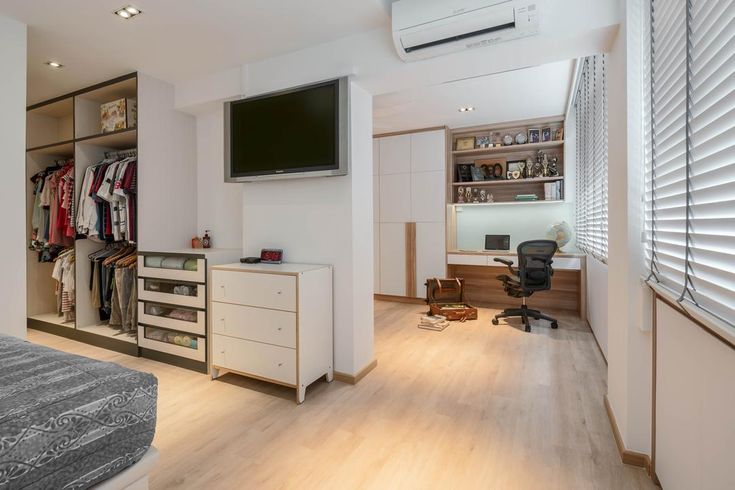
Case Studies of Minimalist Transformations
Consider the journey of a couple who transformed their cluttered city apartment into a serene minimalist retreat:
- Before: Their apartment was filled with sentimental clutter, mismatched furniture, and an overwhelming mix of colors and textures.
- After: By embracing minimalist principles, they pared down their belongings, invested in high-quality, multi-functional pieces, and opted for a neutral color palette accented with carefully chosen artworks. The result was a harmonious, open space that promoted calm and clarity.
Their story is a testament to the idea that minimalist interior design is not about sacrificing personality but about enhancing it through thoughtful curation.
Challenges and Solutions in Adopting Minimalist Interior Design
While the benefits of a minimalist home are clear, the journey toward minimalism can be challenging. Here are some common hurdles and practical solutions to help you achieve the serene home of your dreams.
Overcoming Sentimental Clutter
One of the toughest challenges in minimalism is letting go of items with emotional value. To overcome this:
- Curate Thoughtfully: Keep a select few sentimental items that truly tell your story. Consider storing the rest in a digital format—photograph items and create a memory book.
- Display Strategically: Instead of cluttering surfaces, designate a small, curated display area for your most cherished items.
Budget-Friendly Minimalist Transformation
Redesigning your home with minimalist principles doesn’t necessarily mean starting from scratch or spending a fortune:
- DIY Projects: Simple DIY projects like repainting, upcycling old furniture, or creating custom storage solutions can dramatically transform your space.
- Prioritize Investments: Invest in quality staples—such as a comfortable sofa or a durable dining table—that will serve as the foundation of your minimalist design.
- Gradual Changes: Implement changes gradually. Over time, you can transition to a minimalist aesthetic without overwhelming your space or budget.
Balancing Minimalism with Personal Style
It’s important to remember that minimalism isn’t one-size-fits-all. The key is to balance the minimalist ethos with your personal taste:
- Define Your Aesthetic: Identify what aspects of your personality and style are non-negotiable. Incorporate these into your minimalist framework in a subtle, intentional manner.
- Mix and Match: Don’t be afraid to blend minimalist design with elements that reflect your unique taste, such as a vintage rug or a handcrafted piece of art.
- Evolve Your Space: Allow your home to evolve over time. Minimalism is about intentional choices rather than rigid rules.
Future Trends in Minimalist Interior Design
As we look to the future, minimalist interior design continues to evolve, integrating new technologies and sustainable practices that further enhance the idea of a serene home.
Sustainable Minimalist Design
Sustainability is becoming an integral part of modern design. In the realm of minimalism, this translates to:
- Eco-Friendly Materials: Choosing sustainable materials like bamboo, recycled metal, and reclaimed wood not only supports the environment but also adds a unique character to your home.
- Energy Efficiency: Incorporate energy-efficient lighting and appliances that align with minimalist aesthetics while reducing your ecological footprint.
- Timeless Design: Investing in timeless, quality pieces that last reduces waste and fosters a sense of continuity and stability.
Biophilic Design Integration
Biophilic design—connecting interiors with nature—is a natural partner for minimalism:
- Indoor Gardens: Create small indoor gardens or green walls that add a vibrant, living element to your space.
- Natural Light and Ventilation: Prioritize large windows and open layouts that allow for an abundance of natural light and fresh air.
- Organic Forms: Use furniture and decor that mimic organic shapes, creating a seamless connection between indoor spaces and the natural world.
The Impact of Evolving Technology
Technology continues to reshape how we live and interact with our spaces. In the coming years, minimalist interiors will likely see even more integration of smart systems:
- Adaptive Environments: Homes that adapt to your habits—adjusting lighting, temperature, and even ambiance based on your daily routines—will become the norm.
- Virtual Design Tools: Augmented reality (AR) and virtual reality (VR) tools will allow homeowners to experiment with minimalist designs virtually before making physical changes, ensuring that every decision is both functional and aesthetically pleasing.
- Connected Living: As the Internet of Things (IoT) evolves, your home will become an interconnected system where every device and appliance works in harmony with minimalist principles.
Final Thoughts: Embracing Minimalist Magic
Creating a serene home through minimalist interior design is a journey—a thoughtful process that requires introspection, planning, and a commitment to living with intention. By focusing on the essential, embracing natural elements, and integrating modern technology, you can transform your living space into a sanctuary that not only looks beautiful but also nurtures your well-being.
The best minimalist interior design isn’t about strict rules or adhering to a particular trend. Instead, it’s about creating a space that reflects your values, supports your lifestyle, and offers a haven from the complexities of modern life. Whether you’re starting from scratch or gradually evolving your current space, the principles of minimalism can guide you toward a home filled with clarity, balance, and peace.
As you embark on this journey, remember:
- Simplicity is Key: Focus on what truly matters and let go of the rest.
- Quality Over Quantity: Invest in pieces that are timeless and functional.
- Personalize Thoughtfully: Allow your unique personality to shine through subtle, intentional choices.
We hope that “Minimalist Magic: Discovering the Best Interior Design Trends for a Serene Home” has inspired you to explore the potential of minimalist interior design in your own life. By embracing these principles, you can create a living space that is not only stylish and modern but also a true reflection of tranquility and mindfulness.
Call to Action
Are you ready to transform your home into a serene, minimalist retreat? Start small by decluttering one room, or dive headfirst into a complete home makeover inspired by these trends. Share your journey, ideas, and experiences in the comments below—we’d love to hear how you’re bringing minimalist magic into your life!
For more tips, inspiration, and in-depth guides on minimalist interior design, subscribe to our newsletter or follow us on social media. Let’s embark on this journey toward simplicity and serenity together.
Embrace the minimalist magic, and watch as your home transforms into a sanctuary that rejuvenates both body and mind. Remember, every small step toward minimalism is a step toward a more peaceful, balanced life. Happy designing!

